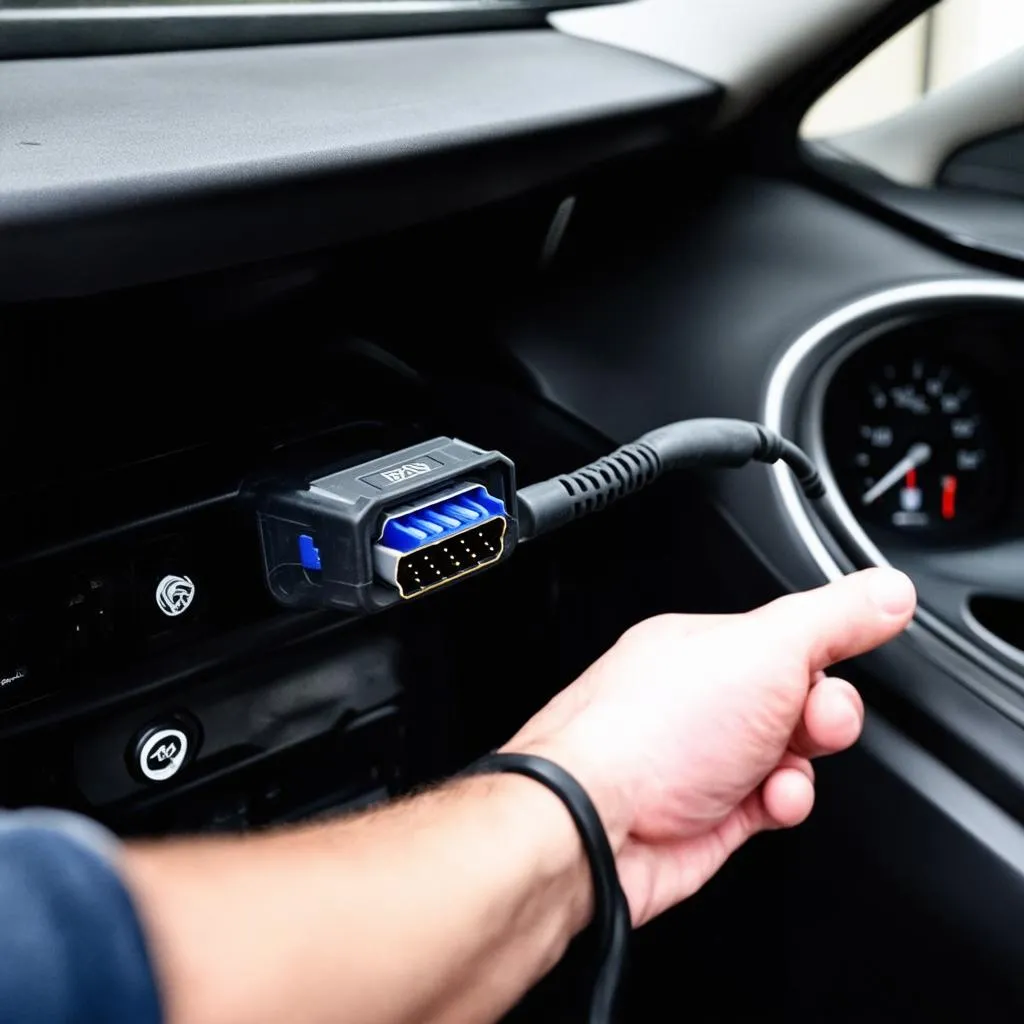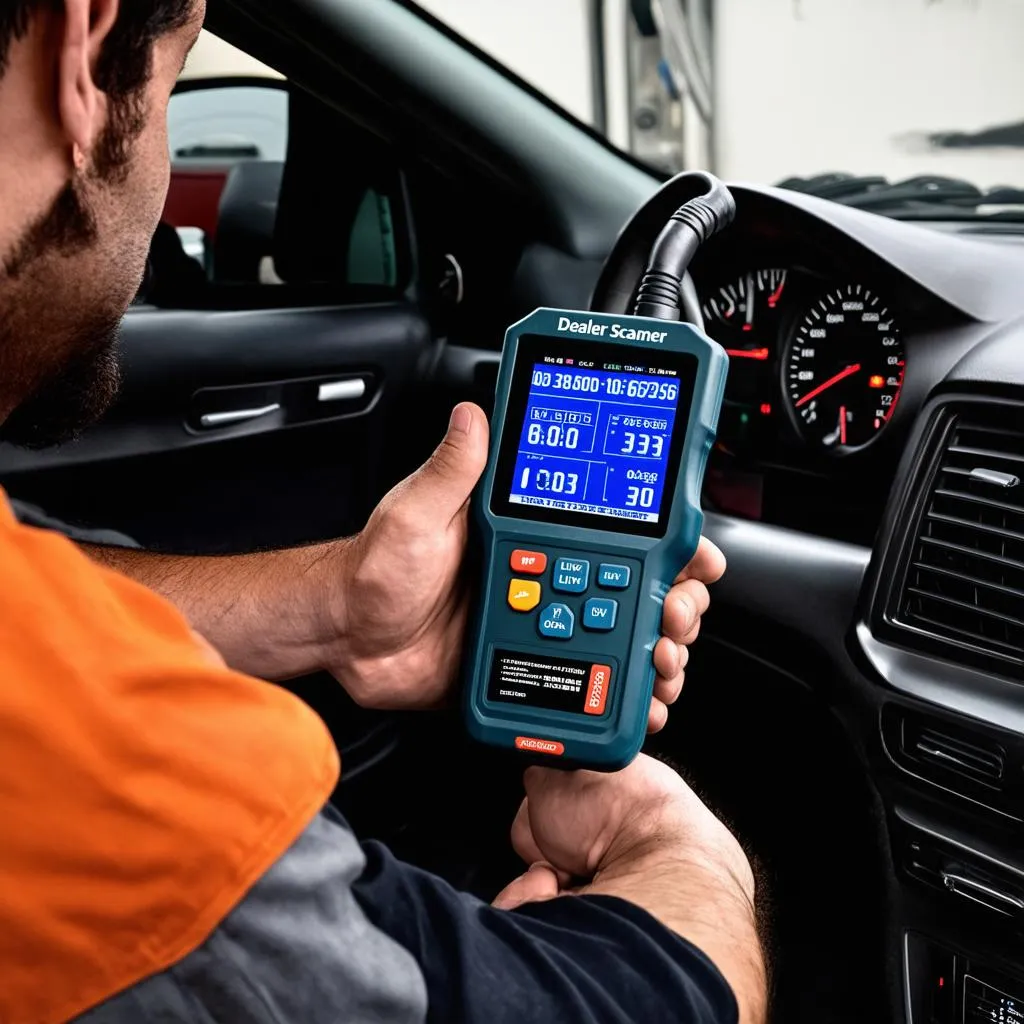Have you ever wondered what your car is trying to tell you? You know, those flashing lights on the dashboard, the sudden loss of power, or the strange noises coming from under the hood. Most of us have experienced this frustration at some point. Well, believe it or not, your car is actually communicating with you, and the in-car OBD sensor is its voice. Let’s dive deeper into what this sensor is, how it works, and why it’s so important for your car’s health.
What is an In-Car OBD Sensor?
The OBD (On-Board Diagnostics) sensor, also known as a diagnostic connector, is a small, standardized port located in your car’s cabin, typically under the dashboard. It’s like a hidden translator, offering a glimpse into the inner workings of your car’s engine, emission system, and other critical components. The OBD sensor essentially acts as a conduit between your car’s computer and a diagnostic tool, allowing you to extract valuable information about your car’s performance and potential issues.
Why is the OBD Sensor Important?
Imagine trying to diagnose a complex medical condition without any tools or information. It would be nearly impossible, right? The same goes for your car. The OBD sensor gives you a powerful window into your car’s health, allowing you to:
- Identify potential problems early on: The OBD sensor can detect and report a wide range of issues, from a simple engine misfire to a serious catalytic converter malfunction. Early detection can prevent bigger problems and save you money in the long run.
- Save money on repairs: By catching problems early, you can avoid costly breakdowns and potentially even save money on repair bills.
- Gain valuable insights into your car’s performance: The OBD sensor provides real-time data on your car’s fuel consumption, speed, and other key metrics, allowing you to understand how your car is performing and potentially improve your driving habits for better fuel efficiency.
Decoding the OBD Sensor: What does it tell us?
The OBD sensor uses a standard protocol called OBD-II to communicate information to a diagnostic tool. This information is presented in the form of Diagnostic Trouble Codes (DTCs). Imagine each DTC as a unique code that corresponds to a specific issue within your car’s system.
For instance, a code like P0171 might indicate a “System Too Lean (Bank 1)” condition, which means your car’s engine isn’t getting enough fuel and might need further investigation. These codes can be interpreted and understood with the help of a diagnostic tool or by consulting online databases dedicated to automotive diagnostics.
Using the OBD Sensor with a Diagnostic Tool
Now, how do you actually access the information stored by the OBD sensor? You’ll need a diagnostic tool or a scanner. These tools come in various forms, from basic OBD code readers to advanced multi-function scanners capable of performing complex diagnostics.
A basic OBD code reader is a relatively affordable tool that can read and display DTCs, offering a simple understanding of the issues present in your car. On the other hand, a multi-function scanner, sometimes referred to as a Dealer Scanner or Professional Scanner, is a more sophisticated tool often used by professional mechanics. These scanners allow you to access a much wider range of data, including live sensor readings, real-time engine performance data, and even the ability to reprogram certain car settings.
Common OBD Sensor Questions
Q: Can I use the OBD sensor to diagnose any car problem?
A: While the OBD sensor can help you identify many common problems, it’s not a magic bullet. Some issues, especially those related to electrical systems or complex mechanical components, may require further investigation and professional diagnosis.
Q: Can I fix a problem myself after reading an OBD code?
A: It’s important to exercise caution. While some issues, such as replacing a faulty oxygen sensor, can be tackled by a DIY enthusiast with the right skills and tools, others require professional expertise. Consulting a qualified mechanic is crucial when dealing with potentially complex or dangerous problems.
Q: Do all cars have OBD sensors?
A: Most cars manufactured after 1996 in the United States are equipped with OBD-II sensors, making them compatible with standard diagnostic tools. However, older cars might have different diagnostic protocols, which may require specialized tools.
Q: Where can I find more information about OBD codes?
A: There are numerous online resources, such as OBD-Codes.com, AutoCodes.com, and Autozone.com, where you can search for specific OBD codes and their meaning. Additionally, many car forums and online communities offer valuable information and troubleshooting tips.
The OBD Sensor: Your Car’s Secret Weapon
The OBD sensor is an invaluable tool for any car owner. It provides vital insights into your car’s health, helps you identify problems early, and potentially saves you money on repairs. Whether you’re a seasoned mechanic or a casual car enthusiast, understanding the OBD sensor can empower you to make informed decisions about your car’s maintenance and repair.
 OBD Sensor Dashboard
OBD Sensor Dashboard
 OBD Sensor Tool
OBD Sensor Tool
Need Help with Car Diagnostics?
If you’re looking for expert guidance with car diagnostics or need assistance in understanding OBD codes, we’re here to help! Our team of automotive specialists is available 24/7 to answer your questions and provide personalized support.
Contact us via WhatsApp at +84767531508 for immediate assistance.
Don’t hesitate to leave a comment below if you have any questions or share your own experiences with using the OBD sensor.
Keep your car running smoothly, and enjoy the ride!